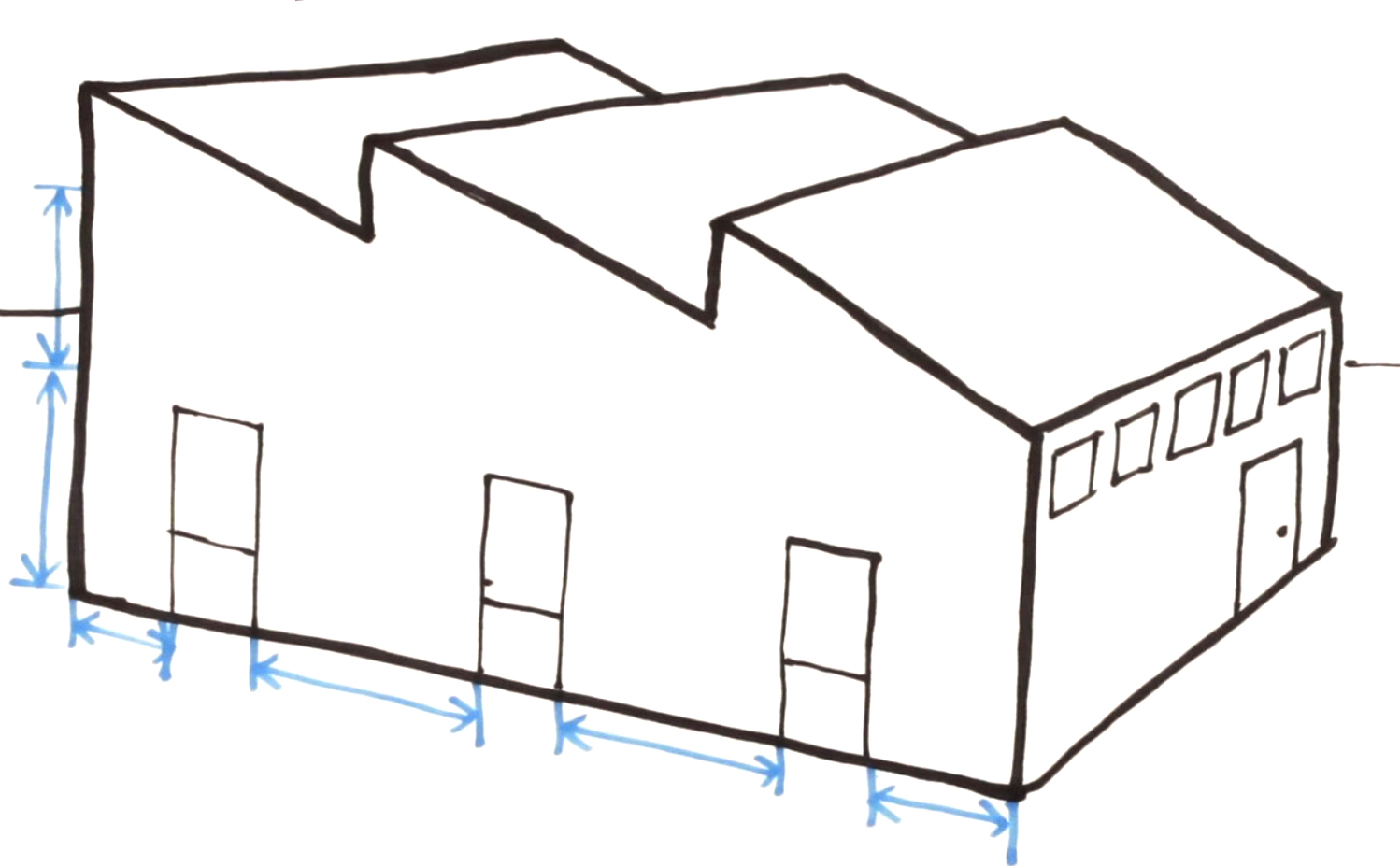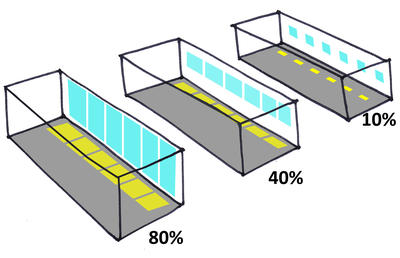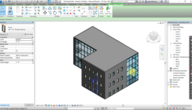You are here
"Aperture" refers to any daylight source, including windows, skylights, openings, and any other transparent or translucent surfaces. Aperture placement and area are important because strategic use of windows and skylights can help you achieve thermal and visual comfort passively, saving both energy and money.
Be sure to visit the passive heating, cooling, and daylighting pages for more specific strategies.
Side Light Aperture Area
Bigger apertures are not necessarily better. They can cause too much heat loss or heat gain, or too much brightness and glare. Choosing just the right sizes for apertures ("right-sizing") is key. One way of measuring side light apertures is the Window-to-Wall Ratio (WWR):
Here, the "net glazing area" refers to only the transparent part of the window, not mullions or framing (usually net glazing area is around 80% of gross window area), and the "gross wall area" uses the full floor-to-floor exterior height of the wall. A common rule of thumb states that the window to wall ratio should be 40% or lower for adequate insulation in cold climates, though more advanced windows with higher R-values (lower U-values) allow higher ratios. In warm climates, higher ratios can be acceptable even without well-insulated windows, as long as the windows are well shaded from the sun's heat.
Different window-to-wall ratios and the resulting illumination
Another metric to pay attention to for proper glazing from side windows is the Window-to-Floor Ratio (WFR). A rule of thumb1 for side-lighting thresholds is that the Window-to-Floor ratio, multiplied by the visible light transmittance (VLT, or Tvis) of the windows, should be:
0.15 < VLT • WFR < 0.18
Top Light Aperture Area
Top lighting apertures are much brighter than side lighting apertures, so less area is required. Similar to the Window-to-Wall-Ratio, there is a Skylight-to-Roof Ratio (SRR) that is the net glazing area divided by the gross roof area. A rule of thumb1 is that the SRR should be between 3% and 6%. Tubular skylights require a much lower SRR than traditional skylights, approximately 1-2%.
To size a rectangular skylight, you can use this simple formula:
Area of one skylight = (Floor to Ceiling Height x 1.5)2 • target SRR
To choose a size that is appropriate, start with 5% SRR and modify depending on climate and building use. For example with a 12' ceiling and 5% skylight to roof ratio the right size skylight would be approximately: (12 x 1.5)^2 x 5% = 16.2sf. Therefore the project should use 4'x4' or 8'x2' skylights for good light distribution.
Aperture area is not the entire story, however. The right size for apertures depends on their placement in the building, the building's orientation, and the glazing properties.
1 From the LEED rating system. IEQ Credit 8.1, LEED BD+C, 2009 edition





